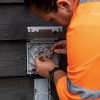Broadband ISP PlusNet UK Prep New IPv6 Technical Trial

Low-cost broadband provider Plusnet, which is part of the wider BT Group, has today revealed that they will shortly launch a new technical trial to test their planned deployment of the IPv6 internet addressing standard, which comes a over a decade after they first trialled the technology.
Internet protocol addresses (IP) help you and your devices (or software) to connect with others around the online world – like an ID number for your connection. Unfortunately, the IPv4 address space could only handle 4 billion addresses and that supply has long been exhausted (except for the resale of existing address pools), which means that in the future ISPs will need to use the new IPv6 standard in order to continue adding new connections without compromise (i.e. CGNAT / IP address sharing is a compromise that can cause problems).
Sadly, the longer form IPv6 addresses are not directly compatible with older IPv4 addresses and so the two will need to be run side-by-side for many years to come (i.e. until the vast majority of the world has enabled IPv6). The good news is that there are various ways to resolve this challenge, but some providers have been dragging their feet for much longer than others, with the likes of Plusnet, Virgin Media and Vodafone being notable holdouts.
Advertisement
The fact that Plusnet still doesn’t have support for IPv6, despite being a part BT (they adopted it years ago) and using almost identical end-user hardware (routers etc.), has always been somewhat of a peculiarity. Not to mention that in 2011 they become one of the first ISPs in the UK to trial it and even urged the rest of the industry to follow their lead (here). All of that now seems rather comical.
In 2019 Plusnet predicted they’d finally be ready to launch IPv6 in the spring of 2020, but due to the pandemic that never happened. In 2021 the ISP informed ISPreview that they still had “a few more things we need to do” before IPv6 went live, but they still expected to “make good progress over the coming year“, yet two years on and nothing has happened, until now.
What’s new with Plusnet?
The key development today (credits to Ray for spotting) is that Plusnet’s Dave Tomlinson has just finished giving a key presentation to the annual IPv6 Council Annual Meeting 2023, which confirmed that they’re about to launch a very small new technical trial of the technology on their “Low Touch Network” (this reflects the part that 90% of their customers use – the other 10% are mostly business and more advanced users, such as those with a static IP address assigned).
Plusnet’s IPv6 Trial Deployment Plan
Set up connectivity
Single user test – assign a /41 statically
Low volume technical trial
up to ~20 staff and friendly customers
2 MSEs in Chesterfield/Sheffield
Each MSE to be assigned a /41
Each customer to be assigned a dynamic /56
AAAA DNS over IPv4Run for ~3 month
We don’t currently have a lot of detail to share, but the related slides do add a small amount of extra context, and we have also asked Plusnet to comment on the new plan. But it’s probably wise for customers not to get too excited (not that IPv6 = excitement for anybody except we IT bods), since it took the best part of 12 years to reach this point and any launch plans they may now harbour should be taken within that context. We’re reminded of the Ents from Lords of the Rings ™.
Advertisement
Mark is a professional technology writer, IT consultant and computer engineer from Dorset (England), he also founded ISPreview in 1999 and enjoys analysing the latest telecoms and broadband developments. Find me on X (Twitter), Mastodon, Facebook, BlueSky, Threads.net and Linkedin.
« Sky Mobile UK Becomes Available on the London Underground






















































Dynamic allocation of /56 PD is always scary with the poor v6 implementation on devices. You’ll end up with so many issues if the CPE asks for a different v6 PD prefix and then user devices don’t re-dhcp(v6) or have issues running multiple v6 addresses and have a terrible v6 implementation and just curl up and cry in the land of v6 blackhole-ville
It’s absurd. Why aren’t they just handing out /64s? Surely they have an almost-limitless supply.
Apologies, I misunderstood. A /56 is bigger than a /64.
What would you suggest? Upgrade the routers? Allocate smaller assignments?
@Iain … There are 254 /64s in a /56. You don’t issue individual /64s.
The real question is why are they not handing out a /48.
@Iain You corrected ourself already 🙂
The real solution is static allocations.
To be pedantic, there are 256 /64s in a /56. No need to avoid the first or last one. In fact those are my favourites 🙂
@NE555 Yup, brain fart! xD
@Steve exactly, all IPv6 handouts should be static as absolutely no reason for them to be dynamic. Dynamic IP addresses date back to dial up days, where you only connected once in a while so you only needed as many addresses as you had modems, rather than as many as you had customers because mostly people weren’t connected. Dynamic addresses should have stopped when we moved to ADLS/VDSL etc that are always on, as every ISP must have as many IPv4 addresses as they do customers otherwise you run into problems pretty quickly with always on connections.
I think manly dynamic IP addresses are still the thing with many ISPs because: 1) They can stop people hosting services and 2) They can charge people for static IP addresses, or push those needing to host something with a static IPv4 to a more expensive business package.
Some may feel a slight benefit with dynamic as they think it gives some degree of obfuscation to anyone that might want to track them. Although with IPv6 addresses, you get temporary throw away addresses that are never used again by anyone, so even better.
one argument against “static for all” is that it makes network maintenance and management more difficult. Want to move a load of customers from one router to another? Now you have to try to move the IP space too.
Which is why so many ISPs charged for static IPs to begin with, it’s an extra headache that deserves a bit of extra revenue.
” Dynamic addresses should have stopped when we moved to ADLS/VDSL etc that are always on, as every ISP must have as many IPv4 addresses as they do customers otherwise you run into problems pretty quickly with always on connections.”
It was only in the era of home routers that it became anything like “always on”, remember that people using USB modems etc would have their connections drop when the computer is turned off.
CGNAT allows ISPs to get around not having enough v4 addresses so that is not a factor either. (most visibly used on mobile where hardly anyone has a “real” v4 address
Thanks for the interesting discussion, folks.
Of course! Yeah, static allocations would be good. As yous say, static IP addresses used to more common. Even if sometimes changing the allocations is necessary, surely ‘semi-static’ would be better than ‘completely dynamic’.
@Iain yes I totally agree, if you are authenticating your customers whether it be PPPoE or DHCP based, you can heavily tie in your IPAM infrastructure into your authentication source (eg. RADIUS) and integrate your OSS/BSS to provision these IPv6 prefixes which are handed to customers at the point of the order process or even provisioning process.
It obviously takes a bit of effort to deploy such a solution and even smaller altnets might not have the in-house skills or knowledge to be performing such a thing on day 1, but everyone seems to be going over everyone else these days so its inevitable that people are deploying subscriber services with BNGs and needing this type of infrastructure…
Just give customers static v6 assignments (not even on the WAN this can be purely DHCPv6 in my eyes whether it be SLAAC or a requested address, just delegated prefix that is used behind the customers LAN which the CPE would chop up into /64s typically) and move on with life I say to those still deploying v6.
I apologize, I’m getting carried away with all the technical details and have to remember sometimes people buy things that are not supported by the vendor and I get stuck in a bubble of the near perfect implementation and don’t consider the real world issues we all tend to run into when deploying v6… I prefer talking about the technical parts of these technologies and just blocking out all the other jumbo that people argue about 🙂
Wow, interesting to see Dave is still at Plusnet. I remember reading blogs etc. (I’m just a customer) by Dave maybe – 10-15 years ago? Hope he’s well compensated!
Dave might technically be BT now as they moved most of the non-call centre staff onto BT contracts a few years back. But yes Dave is still there must be at least 15years in different roles.
Congratulations Plusnet! Sign me up!
“with the likes of Plusnet, Virgin Media and Vodafone being notable holdouts”
Don’t forget Talktalk (both residential and business)
That’s OK though, TalkTalk won’t exist in 12-18 months in its current form if they continue on the current path.
I guess the big question will be after the 3 month trial, how long before it becomes available for all on a permanent basis
Plusnet routers may look small to BT ones and may also have the same internals, but the firmware is very different. I thought they would have gone to IPv6 long ago since they have done trials.
i thought my provider would use IPv6 as well since they are a new network, but they don’t. not that it bothers me as long as I can access the net
Should be similar, not small :). Just come back from work and tired. That is my excuse and I am sticking to it
Zzoomm have rolled out IPv6.
@steve, really? I have not heard anything about it and I thought they would have made a big song and dance out of it since a lot of people wants IPv6.
https://stats.labs.apnic.net/ipv6/AS42611?c=GB&p=1&v=1&w=30&x=1
@Steve thanks for that, Zzoomm have always had IPv6 ranges but never customer deployed so that’s promising that there is some activity.
They have been doing local upgrades to the main cabinets the past week or two so fingers crossed.
@Steve, cheer’s for that. I had a search around, but found very little about it, but buy the seems of it, it is not in all areas. when I get back home, I will have a muck around with my router and see if it will connect to IPv6.
Trouble is for the budget ISP’s is that there is probably currently little visible benefit to the customers (are there any resources currently on the net that can only be accessed with IPV6 ?) so no doubt the techies struggle to get the bean counters to cough up. It also appears IPV6 tunnelling has been built into recent versions of Windows as a work around. As the article states it is a little surprising with Plusnet given parent BT have implemented it since 2016 on the first smart hub.
My router can do IPv6 tunnelling, don’t know if it is worth turning on, all the sites I go to so far are fine. I have to look more into this tunnelling thing, I know what it does, but I mean the settings.
IPv6 addresses are certainly more difficult to remember than Ipv4 and more complex:). Not really looked into it, I am at the age where I just want things to work, which is why I tend not to use Windows much these days 🙂
Teredo which is probably what you are referring to was first in windows in around the Vista days. I believe its been disabled by default for quite some time now though.
Never seen any provider who gives ipv6. I still think ipv4 is the best and easiest to configure no problems with gaming or port forwarding. Even if you have to pay little extra for static it’s worth it. I believe ipv6 is complete failure and nobody will use this for a very long time.
> Never seen any provider who gives ipv6.
AAISP have been doing IPv6 for ~20 years. Indeed, I’m connected to this site over IPv6 as I type this.
> I believe ipv6 is complete failure and nobody will use this for a very long time.
From Googles perspective, things don’t look too shabby https://www.google.com/intl/en/ipv6/statistics.html
IPv6 gives back true end to end connectivity.
Dave’s presentation at the UK IPv6 Council is now up on YouTube:
https://youtu.be/toLbssgqMYE